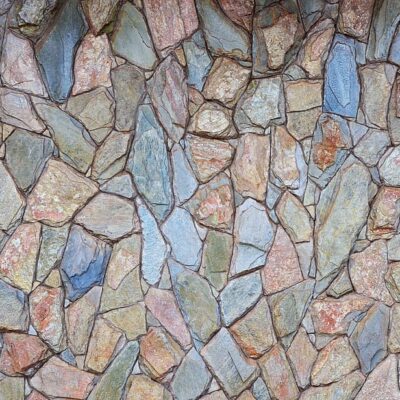I am excited for Kotlin, want to know why? because it resembles Swift a lot. So it’s quite fun learning it. So let me start with a small introduction of Kotlin. We’ll go on to the syntax after that.
What is Kotlin?
Kotlin is a programming language which runs on Java Virtual Machine and is based on LLVM compiler infrastructure. Primarily, It was developed by the team of JetBrains developers based in St. Petersburg, Russia. Kotlin is design to interoperate with Java, just as you can do with Swift & Objective-C. Just like Java, The name Kotlin comes from an island situated near St. Petersburg. Recently Google adopted Kotlin as their official language for Android, which brought a sudden fame to it.
Data Types
The basic data types are Double, Float, Long, Int, Byte, Short, Character, Boolean and String. There are also literal constants such as Decimals, Hexadecimals and Binaries. and it has the rest of the Collections same as Java, but here Kotlin has also distinguished between mutable and immutable i.e collections that can be changed after initialization and those that can’t.
Syntax
If you’re coming from the background of Swift or TypeScript, declaring properties, writing methods and classes is quite similar to that.
Declaring Property
Declaring immutable properties
|
1 2 |
val a: Int = 1 val b = "Kotlin" //Inferred String |
and mutable properties like
|
1 |
var x : Int = 5 |
Commenting
Writing comments in Kotlin is not different than other languages.
|
1 2 3 4 |
// This is an end-of-line comment /* This is a block comment on multiple lines. */ |
Writing a Functions and Classes
Prototype for writing a function is:
|
1 2 3 4 5 6 7 8 9 |
fun functionName(param: DataType):ReturnType{ } //Sample function fun sum(a:Int, b: Int): Int{ val c = a + b return c } |
and defining a class goes this way:
|
1 2 3 4 5 6 7 8 9 10 11 12 13 14 |
class A{ } interface B{ } //Inheritance class C : A(), B{ } |
Control Flow
For Loops
There are a number of ways you can write for loops, syntax is as follows:
|
1 2 3 4 5 6 7 8 9 10 11 12 13 14 15 16 17 18 19 20 21 22 23 24 25 26 27 28 29 30 31 32 33 34 35 36 37 38 39 40 |
//1 for (item in items){ print(item) } //2 for (item: Int in ints) { // ... } //3 for (i in array.indices) { print(array[i]) } //4 for ((index, value) in array.withIndex()) { println("the element at $index is $value") } //5 for (i in 1..4){ print(i) } //6 Increment by any number other than 1 for (i in 1..4 step 2){ print(i) //prints "13" } //7 for (i in 4 downTo 1){ print(i) //prints "4321" } //8 Decrement by any number other than 1 for (i in 4 downTo 1 step 2){ print(i) //prints "42" } |
If Statements
If statements can be written similarly as of any other language.
|
1 2 3 4 5 6 7 8 9 10 11 12 13 14 |
// Traditional usage var max = a if (a < b) max = b // With else var max: Int if (a > b) { max = a } else { max = b } // As expression val max = if (a > b) a else b |
If statements can also be held inside a variable.
|
1 2 3 4 5 6 7 |
val max = if (a > b) { print("Choose a") a } else { print("Choose b") b } |
When Statements
Its like a Switch in other languages, can be written as follows:
|
1 2 3 4 5 6 7 8 9 10 11 12 13 |
when (x) { 1 -> print("x == 1") 2 -> print("x == 2") else -> { // Note the block print("x is neither 1 nor 2") } } //For multiple values when (x) { 0, 1 -> print("x == 0 or x == 1") else -> print("otherwise") } |
Lambda
In Swift, Lambdas are known as Closure, in other languages they are also called Completion Handlers or Blocks. They can be passed as arguments in functions, and are really helpful while implementing Network classes, writing a lambda function is pretty straight forward. Here is a function which takes in two Integers and return the greater number in the block while the function is being called.
|
1 2 3 4 5 6 7 8 9 10 11 12 13 14 15 16 |
fun compare(a: Int, b: Int,completion:(greaterNumber:Int)->Unit){ if (a > b){ completion(a) } else{ completion(b) } } //Usage var a = 1 var b = 7 compare(a,b,{ number -> print("$number is greater") //prints "7 is greater" }) |
Extensions
It’s one of the useful feature of Kotlin, with this feature you can add further functions and properties to existing classes. Lets understand it by an example. Consider a immutable list.
|
1 |
val list = listOf(1,2,3,4) |
And consider for some reason our program might access an index out of range from this list, for instance; a 5 or 6 and so on.
|
1 |
print(list[5]) |
Which will leave us with a runtime exception.
|
1 |
Exception in thread "main" java.lang.ArrayIndexOutOfBoundsException: 5 |
What we can do is write an Extension for the List, which will return a null value in case the index is out of range.
|
1 2 3 4 5 6 7 8 9 |
fun List<Int>.containsIndex(index:Int):Int? { if (this.contains(index)){ return index } return null } //Usage print(list.containsIndex(5)) //prints "null" |
So, that was it for this tutorail. If you guys have any question please leave it in the comment section below.
Good Day!






